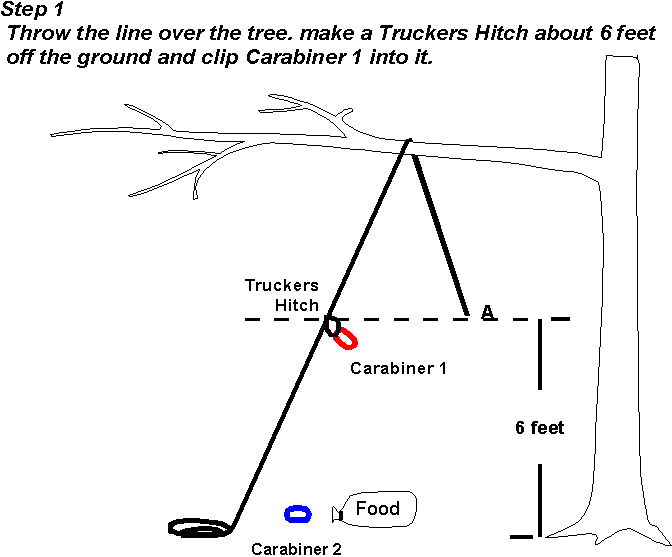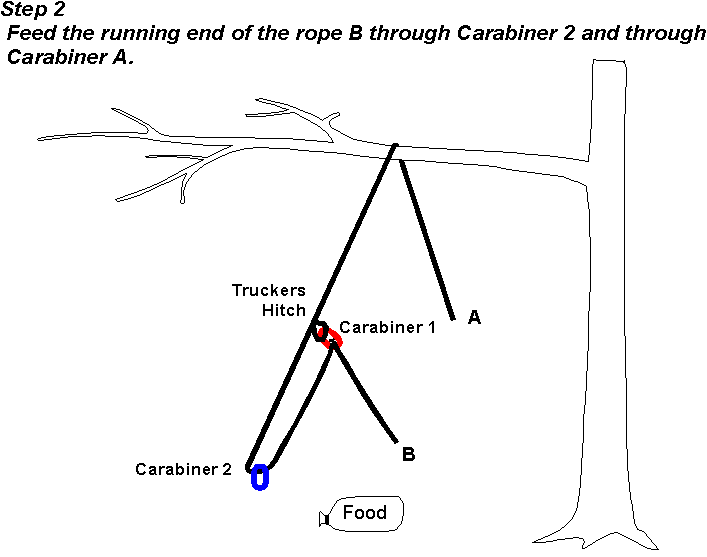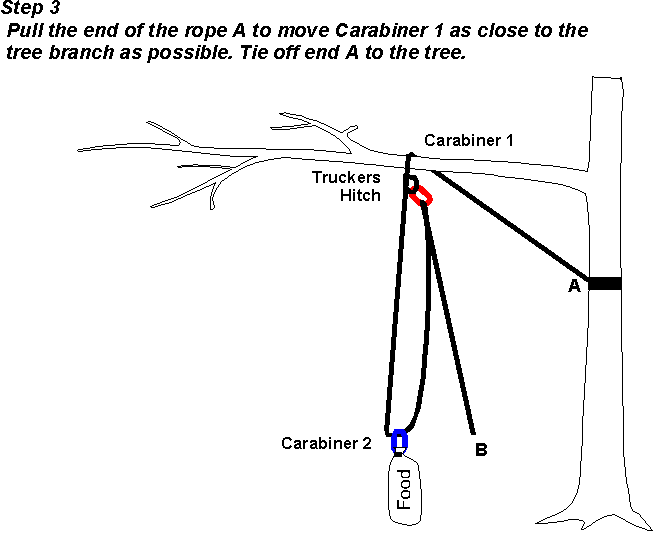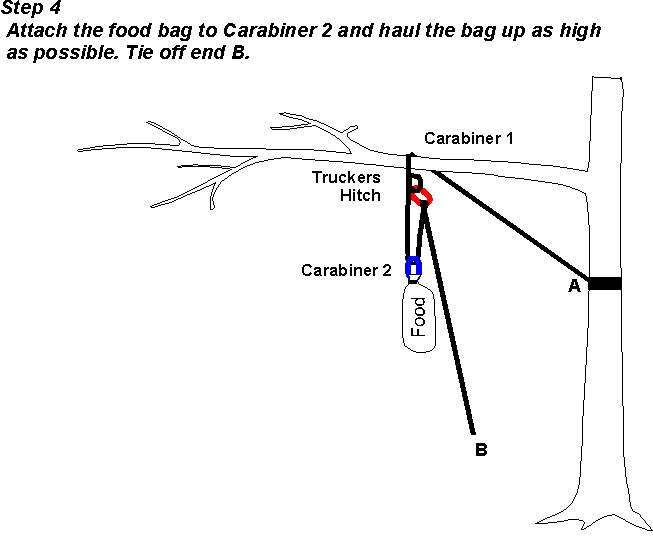
The goal of bearproofing your camp is to minimize odors that might attract bears, and to set up safe storage areas for food and garbage that are out of reach of bears and are away from your sleeping area. The best way to do this is to start with a camp set up that facilitates these goals. In his book Safe Travel in Bear Country, Gary Brown describes a basic camp set up where the sleeping area is upwind of the kitchen and food storage area and at least 300 feet (100 meters) apart (see Figure 6.26).

Figure 6. 26
“Bear bagging” is something of a general term used for hanging your food. There are lots of other animals (raccoons, opossums, coyotes, chipmunks, skunks, etc.) that will go after human food. In some cases you may be camped in locations where there are no bears, but still need to hang your food at night. The best thing to do is talk with local rangers about what the “critter” population is and what precautions you will need to take. In areas with significant bear problems, there may be permanent food hanging stands or containers provided by the park.
Hang up all food (except unopened canned food), pots, pans, cups, bowls, utensils, all garbage. In grizzly bear territory you should also hang up used tampons (see Chapter 5 - Leave No Trace Camping: Women and Menstruation; Chapter 7 - Natural History: Dealing with Bears). On one backpacking trip in Shenandoah National Park, we diligently hung everything up. Around midnight a black bear came into camp and trotted off with someone’s pack. He had left a tube of toothpaste in one of the outer pockets (perhaps because of their breath problems, bears love toothpaste). Be sure that your camp is clean of food scraps which may attract a bear. Suspend food and garbage in duffel bags, stuff sacks, or sealed plastic bags at least 12-15 feet (3.6 - 4.5 meters) above the ground and at least 8 feet (2.4 meters) from the tree trunk. The bags should hang from a point where the tree can still support them but bear cubs and other critters will have difficulty reaching them. Make sure the bags cannot be reached from the ground, either.
Be creative and sensible with your techniques of hanging food. A 75 foot (23 meters) rope (at least ¼ inch thick - 6 millimeters), two carabiners, and stuff sacks are helpful. When using stuff sacks, don’t hang the sack directly from the drawstring. Instead, wrap the string around the neck of the sack and tie it leaving a loop through which to clip a carabiner. This technique alleviates the stress on the drawcord by distributing the stress to the entire sack. Thus, the stuff sack is less likely to rip and spill its contents onto the ground. Below are two useful methods of bear bagging:

Figure 6.27
This simple but effective mechanical advantage hauling system was developed by Chris Marrison for the Outdoor Action Program (see Figure 6.28). It's particularly helpful when you have heavy food loads. Bears are very intelligent and some bears are smart enough to know that by cutting the diagonal rope to the tree, they can bring down the food bag.

Figure 6.28
If you are going to be traveling in a treeless area where bears are present
you will need to take additional precautions. You may want to invest in bearproof
plastic containers to store your food in and leave this on the ground away from
your Sleeping Area and Cooking Area (see Figure 6.26). Bears may still be able
to smell the food, but they cannot open the containers. Some parks provide bear
containers or bear poles. A bear pole is a pole with a Y-shaped top. Using a
large lifting pole with a hook on the end you can place your bags up in the
fork of the Y.
 |
 |
 |
 |
The Outdoor Action World Wide Web Site is part of the Outdoor Action Program at Princeton University. The information provided here is designed for educational use only and is not a substitute for specific training or experience. Princeton University assumes no liability for any individual's use of or reliance upon any material contained or referenced herein.
This article is written by Rick Curtis, Director, Outdoor Action Program. This material may be freely distributed for nonprofit educational use. However, if included in publications, written or electronic, attributions must be made to the author. Commercial use of this material is prohibited without express written permission from the author. Copyright © 2002 Rick Curtis, Outdoor Action Program, Princeton University.